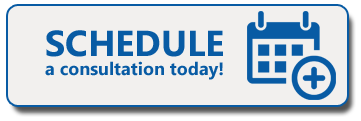
“What you need to know about Every type of Retirement Account NOW”
What is the best retirement account for your retirement plan, well it depends? I’m going to cover the basics of each type of account to help clear the field a bit and help prod you toward the path to prosperity. The important thing is to get started and put money into the best retirement account for your situation.
By David Rae Certified Financial Planner™, Accredited Investment Fiduciary™
Maximize your Retirement Security
Looking to maximize your retirement account savings, and finding yourself a little confused on all of your options from ROTH IRAs to 401k to 403b to Traditional IRA, to ROTH 401k to Non-Qualified Plans to Profit Sharing to Defined Benefit Pension Plans maybe even a RICH PEOPLES ROTH. I will walk you through the basics for every type of retirement account to help you see which might or might not be best for you. Confused yes, don’t feel bad, you aren’t alone. The options often seem endless, but a Fiduciary Certified Financial Planner™ like myself can help you simplify the process and help you and your family get on track for financial independence.
Over the years your “financial plan” may have ended up with a few of these retirement accounts in it. There is no one perfect retirement plan for everyone. I am going to give you a brief overview of the various types of retirement account potentially available to you. Some won’t be right for you, and others you may not be eligible to use at this time. You may even be using a combination of several of these retirement accounts in any one tax year.
Feeling stressed or afraid when trying to plan for retirement is totally normal, but it doesn’t have to be that way. A fiduciary Certified Financial Planner™ can help you sort through the pros and cons of each plan to help you stay on track for financial independence.
Individual Retirement Accounts (IRAs)
A traditional IRA is one of the most common tax-sheltered retirement accounts. This type of plan in available to pretty much anyone with earned income. They are easy to set up and manage, and they have been around longer than some of the other types of retirement accounts that we will cover later. This is also the “catch-all” account you can consolidate and rollover many other retirement accounts into without paying taxes now.
IRAs are self-directed which means you control which investments you hold in your account, and where you have the account. This is in contrast to employer-sponsored plans where you are often limited to the investment options selected by your employer.
Another nice thing about IRAs is you have until April 15th to make contributions for the previous tax year. For the procrastinators out there, this means just a little extra time to get the money into your retirement account. Or for those you struggling paycheck to paycheck, it means you have a few extra months to scrape together a sizable contribution.
There are three main types of IRA retirement accounts.
Traditional IRA
The Traditional IRA is the most common type of IRA. You can contribute up to $5500 per year ($6500 if you are 50 or old including the catch-up contribution). Depending on your household income you may be able to deduct your contributions to an IRA, potentially lowering your current tax bill. (There are limits to contributions and deductions see IRS Table below.)
Another benefit of an IRA is you invested will grow on a tax-deferred basis, and you will not incur taxes until you start taking money out of the account. This is a retirement account, and funds need to stay in the account until at least 59 ½ to avoid a 10% IRS penalty. Withdrawals will be taxed as regular income once you have reached the ripe old age of 59 ½. With proper tax planning advice, the goal would be to pay fewer taxes on this income in retirement than you would while you are working full time.
How valuable can tax deferral be for your retirement? Great Question thanks for asking.
Let’s assume that you invested the current maximum per year into an IRA. That’s $5500 per year and you were able to get an 8% return after fees but before taxes. Now assuming your estimated federal and state income tax rate is 35% – your after-tax return drops to roughly 5.2%. Put $5500 away and pay taxes for 30 years and your account will have grown to around $378,215.
Now let’s say you used an IRA instead, again invested $5500 per year for 30 years and earned the same 8% return. Now because of a tax deduction, you won’t have to pay income taxes on the income used to fund the account. Similarly, because of tax deferral, you are not having to pay capital gains rates along the way as your investments grow. Assuming you put away $5500 every year for 30 years and averaged an 8% return after fees, your account would have grown to $623,057.
With tax deferral, you could end up with roughly $244,842 for the same amount of saving and work. To be fair you will owe taxes on your withdrawal, if you end up in the same 35% bracket at retirement you would still come out ahead with tax deferral, the gap drops but is still quite substantial That being said many people do end up in lower tax brackets in retirement which further increases the benefits of tax deferral.
The goal of a retirement account is to help you accumulate wealth to maintain your standard of living in retirement. My goals as a fiduciary financial planner are to help you make the process of saving for retirement easier and less stressful with proper guidance, proactive advice, and the benefits of a comprehensive financial plan.
Spousal IRA
This one is often missed or unknown to many people. In the vein of “couples who plan together, stay together” this is one not to be ignored.
If you are a spouse who isn’t working. This can be unemployed or stay at home parent, you may be eligible for what is called a spousal IRA, regardless of if you have any earned income. The caveat here is your spouse will have had the income to cover the contribution. This is above and beyond the working spouses IRA contributions.
For example, let’s say the full time working spouse earns $150,000 per year, and you are staying at home with your 3 lovely kids. Both you and your spouse can make $5500 contributions to your own IRAs. Each contribution would also be tax deductible. The spousal IRA allows you to put more money away into retirement accounts even though just one of you had earned income. $11,000 total could be put away, which could to equate to a nice lowering of your current tax bill.
To qualify for a spousal IRA you will need to be married filing jointly. If you happen to file separately, the spousal provision is not available. You each potentially maintain your own separate IRA accounts in your own name.
A spousal IRA is essentially a traditional IRA, will all the same provisions and limitations. You can also set up a spousal ROTH IRA. This also comes with all the limitations and provisions of a ROTH IRA.
Without further ado, I present to you ROTH IRA……
Roth IRA
The Roth IRA is very similar to a Traditional IRA and shares many of the same benefits. It has tax-deferred investment income accumulation, unlimited potential investment options, and you control the account. There one big benefit that comes with a ROTH IRA that can be a game changer for many of you.
TAX-FREE INCOME is possible with distributions from a ROTH IRA if you follow a few basic requirements. As long as you have reached the ripe old age of 59 ½ and have had a ROTH IRA for at least 5 years, there is no tax on the distributions.
Why is this such a big deal? A ROTH IRA can add tax diversification to your retirement plan. This can give you more room to maneuver to minimize the taxes you pay throughout your retirement. Most people have been told repeatedly that they will be in a lower tax bracket when they retire. For the more successful and savvy people reading this post that may not be the case. For those who are married, and with several sources of retirement income (retirement accounts, pensions, social security) you may end up in a higher tax bracket than you expect. Not to mention tax rates may be higher generally in the future. Having a well-funded ROTH IRA can give you more flexibility to do some proactive tax planning with the worthy goal of increasing your net (after-tax) retirement income.
A few other big things you need to know about ROTH IRAs and their benefits:
- You do not get a tax deduction for making contributions to a ROTH IRA.
- You can potentially withdraw your contributions to a ROTH IRA at any time without owing taxes or penalties.
- There are no required minimum distribution requirements for ROTH IRAs which means you money can grow tax-free for even longer.
I want to reiterate the last point above- it is an important one. RMDs require that once you reach 70 ½ that you start taking distributions from your retirement account whether you need them or not. These distributions are based on your life expectancy, and if you live beyond that you may have already drained your IRA and still have plenty of life to live. Not a good situation to be in. On the other hand, you can keep money in the ROTH IRA literally for the rest of your life.
IRA TABLE from the IRS 2017 Contribution Limits
| PLAN | TRADITIONAL IRA | SPOUSAL IRA | ROTH IRA |
| 2017 Contribution Limits | $5,500, or $6,500 if age 50 or older | $5,500, or $6,500 if age 50 or older | $5,500, or $6,500 if age 50 or older |
| 2017 Annual Income Limits | If covered by an employer plan: Single, $62,000 to $72,000; MFJ, $99,000 to $119,000, Otherwise no limit | If a spouse is covered by an employer plan, $184,000 to $194,000, Otherwise no limit | Single, $115,000 to $133,000; MFJ, $186,000 to $196,000 |
| Tax Treatment During Accumulation | Contributions fully deductible, unless covered by an employer plan, then limits above apply; investment income tax deferred | Contributions fully deductible, unless covered by an employer plan, then limits above apply; investment income tax deferred | Contributions not deductible; investment income tax deferred |
| Tax Treatment Upon Withdrawal | Subject to ordinary income tax if taken after age 59.5; ordinary income tax plus 10% penalty if taken before | Subject to ordinary income tax if taken after age 59.5; ordinary income tax plus 10% penalty if taken before | Withdrawal of contributions not taxable; withdrawal of investment income not taxable after age 59.5 and at least 5 years in the plan; investment income taxable on withdrawal – plus 10% penalty if taken prior to 59.5 |
| Investment Options | Unlimited | Unlimited | Unlimited |
| Required Minimum Distributions | Yes, each year beginning at age 70.5 | Yes, each year beginning at age 70.5 | Not Required |
| Miscellaneous | Can make non-tax deductible contributions even if income limits exceeded | Can make non-tax deductible contributions even if income limits exceeded | Even if you don’t qualify for a Roth contribution, you can make a “backdoor” Roth by making a contribution to a traditional IRA then doing a Roth conversion |
Defined Benefit Contribution Plans –(Personal Pension or Cash Balance Plan)
I’m going to save you a little reading here. If you are a small business owner or self-employed and have set up a 401(K) plan for your business keep reading. If this is not you skip ahead to the Employer-sponsored plan section below.
Defined Benefit plans are for those looking to save quite a large sum of money. The last one I put together had an annual contribution above $100,000 per year. This plan is something to look at once you are already maxing out a 401(K) plan. Talk to your trusted fiduciary Certified Financial Planner™ and CPA to see how this may work for you and your overall financial roadmap. If they don’t have the team of financial professionals to handle this type of plan, feel free to reach out to me.
I’ve written a bit more about this here: Personal Defined Benefit Plan for Small Business Owners Defined. I don’t want to spend too much time here, as I know this plan is not for everyone. All the same, the benefits can be huge for the select people who these plans really fit for. Ideally high earning small business owners, with few employees.
Essentially a Defined Benefit Plan is a way to put more away for business owners retirement with a tax deduction on contribution, and tax-deferred growth. On the other hand, if you are an employee with a pension plan through your employer, and not really have much say in how it is managed or invested. You do have a say on how you take distributions from the plan, but that’s it.
Employer-Sponsored Defined Contribution Plans – 401(k) or Profit-Sharing Plans, 403(b) Plans, 457, TSP
I’m going to hope than many of you have one of these types of plans available from your employer. Sadly, many people don’t even have access to work place retirement plans, which can add to the challenges of saving enough to reach financial independence.
Your parents or grandparents may have had a pension from work, most workers today will need to contribute to defined contribution plans. These are the four primary types of defined contribution plans.
401(k) Plans or Profit Sharing Plans
401(K) is the most common for private sector employees. Much like a Traditional IRA, your contributions are tax-deductible, and your investments will accumulate on a tax-deferred basis. Again you should leave your money in the account until you are 59 1/2. Withdrawals will be subject to ordinary income taxes. Plus that pesky 10% penalty for early withdrawals (pre 59 ½). There will also be required minimum distributions from 401(K) plans starting at 70 ½.
There are a few reasons to love 401(K) plans. First, off they can be funded right out of your paycheck, which will make it easier to stick to your contributions. Second, they have much larger contribution limits. “Maxing Out” you IRA may sound great, but in reality, if you are starting late or have above average income (household income above say $50,000) putting way just $5500 per year will most likely leave you taking a big dip in your standard of living during retirement. In 2017 you can contribute up to $18,000 per year to a 401(K) plan. If you are 50 years wise or more you can also make a “catch-up” contribution of up to $6,000. Meaning a potential $24,000 contribution per year each. To make this even better your employer may match some of your contributions, and/or offer a profit sharing contribution.
Can I have more than one type of Retirement Account?
You can potentially have combined contributions (employee, employer, and any profit sharing) of $54,000 per year. That jumps to $60,000 per year if you have reached 50 years old (2017 numbers). There will often be a vesting schedule for the employer contribution, meaning if you leave your job within a certain period of time you will forfeit some of the matching or profit sharing contributions. With that in mind be aware of when you give notice, you don’t want to quit one day before another vesting deadline. (This may sound obvious but I guarantee you most people forget about this when they overwhelmed with the excitement of their next job.)
Depending on how you look at it a big benefit or big drawback of a 401(K) plan is the limited investment options. You may get stuck with some crappy investment options, or the plan may not have a great array of choices. For some the limited choices may make getting started easier, others may grumble about being limited to a select group of investments, or not being able to utilize their favorite investment selections. In the grand scheme of things I’m pretty ambivalent on this point, I’d rather get a generous company match and good investment options, than amazing options with no match, or the lower contribution limits of a traditional IRA.
Some 401(K) plans do offer loan provision – but don’t mortgage your future. Ignore this option, and don’t touch your retirement savings. Your older self will thank you. Also if you take a loan, and then leave your job, you will most likely end up with a large tax hit, as the rest of the loan becomes taxable income, with that pesky 10% IRS penalty (if you are under 59 ½) that we mentioned above.
If you are looking to retire early consult your fiduciary Certified Financial Planner about 72-T options to avoid the 10% IRS penalty. I won’t bore you with the details, they are pretty eye crossing and complicated. Just know that you may be able to set up some equal payments from your 401(K) prior to 59 ½.
ROTH 401(K) Plans:
A relatively new option that is becoming more common in 401(K) plans is the ROTH 401(K). From a tax standpoint, these are very similar to a ROTH IRA, but they have a higher 401(K) contribution limits.
You can break up your contribution between a ROTH 401(K) and a regular 401(K). Also, be aware any employer matching or profit sharing contributions will be put into the regular 401(K) account.
Read More on here: What is the difference between a ROTH IRA and ROTH 401k? Which is Best?
403(b) Plans
A 403(b) is another type of employer-based retirement plan that is generally used for tax-exempt organizations like charities, public schools, and hospitals. They are similar to 401(K)s including tax treatment, etc. There is potential to have a ROTH 403(b) provision, but I haven’t run into it very often.
457 Plans
457 plans are generally offered by state and local government and even some tax-exempt organizations. They are virtually identical with 401(K) and 403(b).
Thrift Savings Plan (TSP)
I’ve come across this mostly with Federal Employees or military personnel. They are also similar to other employer plans. The two main advantages over other plans 1) Federal employees are also covered by a defined benefit plan 2) Employer matching of at least 1% even if you don’t contribute to the plan. Depending on where you are working the match can be as high as 5%. Consult your HR department for your specific, and your financial planner how to maximize this benefit for your retirement planning.
For the adventurous investors reading this, the big drawback of TSP plans is that they generally offer an extremely small list of investment options.
EMPLOYER-SPONSORED DEFINED CONTRIBUTION PLANS BASIC TABLE
Employer matching contributions to a maximum of $54,000 combined$18,000, or $24,000 of age 50 or older; Employer matching contributions to a maximum of $54,000 combined$18,000, or $24,000 of age 50 or older; Employer matching contributions to a maximum of $54,000 combined$18,000, or $24,000 of age 50 or older; Employer matching contributions to a maximum of $54,000 combined ordinary income tax plus 10% penalty if taken before subject to ordinary income tax if taken after age 59.5; ordinary income tax plus 10% penalty if taken before subject to ordinary income tax if taken after age 59.5; ordinary income tax plus 10% penalty if taken before subject to ordinary income tax if taken after age 59.5; ordinary income tax plus 10% penalty if taken before
| 457 TSP PLAN | 401(K) | 403(B) | |||||||||
| 2017 Contribution Limits | $18,000, or $24,000 of age 50 or older; | ||||||||||
| Contribution Source | Employee and employer | Employee and employer | Employee and employer | Employee, employer, or both | Tax Treatment During Accumulation | Contributions fully deductible, investment income tax deferred | Contributions fully deductible, investment income tax deferred | Contributions fully deductible, investment income tax deferred | Contributions fully deductible, investment income tax deferred | Tax Treatment Upon Withdrawal | Subject to ordinary income tax if taken after age 59.5; |
| Investment Options | Determined by employer | Determined by employer | Determined by employer | Determined by employer | |||||||
| Roth Provision | Yes | Yes | Yes | Yes | |||||||
| Loan Provision | Maximum 50% of vested balance, to a maximum of $50,000 – if permitted by employer | Maximum 50% of vested balance, to a maximum of $50,000 – if permitted by employer | Maximum 50% of vested balance, to a maximum of $50,000 – if permitted by employer | Maximum 50% of vested balance, to a maximum of $50,000 | |||||||
| Required Minimum Distributions | Yes, each year beginning at age 70.5 | Yes, each year beginning at age 70.5 | Yes, each year beginning at age 70.5 | Yes, each year beginning at age 70.5 | |||||||
| Miscellaneous | Special catch-up provision for public service workers with more than 15 years of service |
Small Business Owner and Self-Employed Retirement Plans – Solo 401(k), SEP IRA, Simple IRA
Listen up, Small Business and self-employed folks the ball is in your court when it comes to retirement planning. For many people, this little or no retirement planning will happen. For a select few this means you can be proactive and potentially sock away large sums of money into a tax-advantaged account. Some plans are more flexible than others, so consider your specific needs and business when choosing a retirement plan.
There are three basic retirement plans that a commonly used by the self-employed workers, and small business owners.
Solo 401(k) Plan (can also be a Solo profit sharing plan)
Like the 401(K) above for a solopreneur (self-employed worker). In this case, you will be both the employee and employer which may allow you some extra flexibility to contribute larger sums.
The info is similar to the regular 401(K) mentioned above, but a solo 401(K) has 2 major differences
- This plan is just for the self-employed work and possibly a spouse. Not to be used for businesses with employees.
- Generally, you will be able to contribute more to a solo 401(K) than you would as an employee with a 401(K) especially once you take into account combined employee and employer contributions.
Why does being both the employee and employer matter? You can contribute $18,000 as the employee. As the employer, you can also contribute 25% of your business net income to your plan as the employer. Potentially putting in $54,000 per year. Plus the catch up if you happen to be over 50.
If you put in $54,000 now you will lower your current tax liability. Looking to save even more? Consider also the setting up a Defined Benefit Pension Plan.
Let’s say hypothetically you make $250,000 with your business this year. You would contribute $18,000 as the employee. But you can also contribute 25% of your net income up to a total of $54,000 (including the employee contribution). With $250,000 income you could make the maximum contribution of $54,000 for the year.
One final benefit of the EMPLOYER contribution- you have until you file your taxes to contribute the money. So if you end up with a surprisingly large tax bill, you will have a bit of time to scrounge together a larger 401(K) employer contribution to try and bring it down from the stratosphere. I’m not recommending procrastinating but you can potentially make contributions as late as October the following year.
That’s not a bad haul from a single retirement program, and that is what makes the solo 401(k) such a potentially powerful plan.
Final note for those of you who plan to work past 70. If you are still currently employed in the business that the solo 401(K) is associated with said business – these specific funds will not be subject to required minimum distributions. Other IRA’s or old retirement account will still be subject to RMDs.
To cover all our bases there is also a SOLO 401(K) ROTH Options. For simplicity sake, it follows similar rules like the regular 401(K) and ROTH 401(K).
Read More: How to slash your tax bill with a Solo 401(K)
SEP IRA
SEP stands for Simplified Employee Pension Plan Individual Retirement account. Generally not recommended for businesses with non-family employees, but technically can be used for a small business.
The SEP IRA works similarly to a Traditional IRA or 401(K). You will get a tax deduction when you contribute money and will owe taxes when you make withdrawals. Again you will subject to a 10% IRS penalty for money withdrawal before you reach 59 ½. These accounts will also be subject to required minimum distributions once you reach 70 ½.
The SEP also works the same way as a basic traditional IRA, in regard to contributions, tax treatment, investment options, distributions, and RMDs.
Like a 401(K) you can potentially make much larger contributions to a SEP IRA. This difference can be huge depending on your net income from your business.
Remember with a Traditional IRA your contribution are limited to $5500, which will not be a large enough contribution for all but the lowest earners. On the other hand, a SEP IRA allows you to contribute 20% of your net business income. This can work out to as much as $54,000 per year. This can take a pretty big chunk out of your tax bill. More importantly, it will help you get on track for financial independence.
SIMPLE IRA
A SIMPLE IRA is another type of IRA that business owners can set up for their employees. It is typically for businesses with less than 100 employers.
You can contribute more than is allowed for Traditional IRAs but less than may be allowed with SEP IRAs or 401(k) Plans. You can contribute up to 100% of your income up to the maximum of $12,500. Or for those that are 50 plus who can contribute $15,500.
I’m not a huge fan of these plans. I typically look to help my client set up a plan with the largest potential tax-advantaged contributions. That being said, one advantage of a SIMPLE IRA is that you are not required to file a plan specific tax return to the IRS.
As an employer, if you set up a SIMPLE IRA you will be required to either make a 3% matching contribution or a 2% non-elective contribution up to $5000 for every employee. Depending on your workforce this may add up to quite a large sum of money.
There are options for everyone to find the right Retirement Plan to fit their financial planning needs. Don’t let the bevy of available plans derail your push to get one started for your business and your march towards financial independence. Regardless of which plan you end up choosing the most important thing is to get started. Save as much as you can, and stick to it even when times get tough. You can always earn more money, but you can’t make more time.
Live for Today Plan for Tomorrow. If you want help to simplify the process and find the right Retirement Plan for your business reach out to a fiduciary Financial Planner like David Rae.
DAVID RAE, CFP®, AIF® is a Los Angeles-based financial planner with DRM Wealth Management, a regular contributor to Advocate Magazine, Huffington Post, Investopedia not to mention numerous TV appearances. He helps smart people across the USA get on track for their financial goals. For more information visit his website at www.davidraefp.com

You may also enjoy:
The opinions voiced in this article are for general information only. The hypothetical investment results are for illustrative purposes only and should not be deemed a representation of past or future results. Actual investment results may be more or less than those shown. This does not represent any specific product and/or service. *Tables Courtesy of IRS dot Gov Website. “Retirement Account”









[…] What you need to know about Every type of Retirement Account NOW […]
[…] you are making payroll-deducted contributions to a 401(k) plan, or using an IRA or Roth IRA, make automatic contributions at least monthly. Treat it like any […]
[…] plan but your efforts just aren’t working as they should? You may be saving for a home and are contributing heavily to your retirement accounts. Excellent and swell. Hopefully you are were spending less than you make and have no debt. […]
[…] Four in 10 retirees said their retirement expenses are higher than expected, according to the EBRI 2018 Retirement Confidence Survey. About the same number of those retirees surveyed admitted to not calculating their health care expenses before they retired. One third of respondents admitted to having no idea what to expect in regards to health care expenses in retirement. […]
[…] to a workplace retirement plan whether it be 401(K) plan, profit sharing, pensions or other similar retirement accounts. This puts Los Angeles among the least retirement plan-friendly cities in the country. PS, this […]
[…] especially important if you want to retire before 59 ½. Taxation and penalties can make typical retirement account tough to access early. Don’t fret there are tax planning strategies to sidestep these […]
[…] spruce up your retirement income total, or maybe help you retire just a bit sooner. And while a retirement account will tie up your money for a while, if you are prone to blowing through cash too fast, this can be […]
Thanks for the tip that working with both my employer’s HR department and a financial planning will help me out in figuring out that specifics of the optimal retirement plan for me. Since I’m on the last years of my late thirties, I think it’s important that I start thinking about retirement planning services now so that I wouldn’t be a burden to my children in about 20 or so years. Having great financial stability at that age might even lead me to being able to leave behind a significant inheritance for my children.
[…] Financial Planner and CPA to explore which Cash Balance Plan structures will give you most tax and retirement benefits. It may take a bit of extra effort but the tax savings make it more than worth […]
[…] you inherit a retirement account or pension, withdrawals will be fully taxable. This will likely mean you will have to pay Federal […]